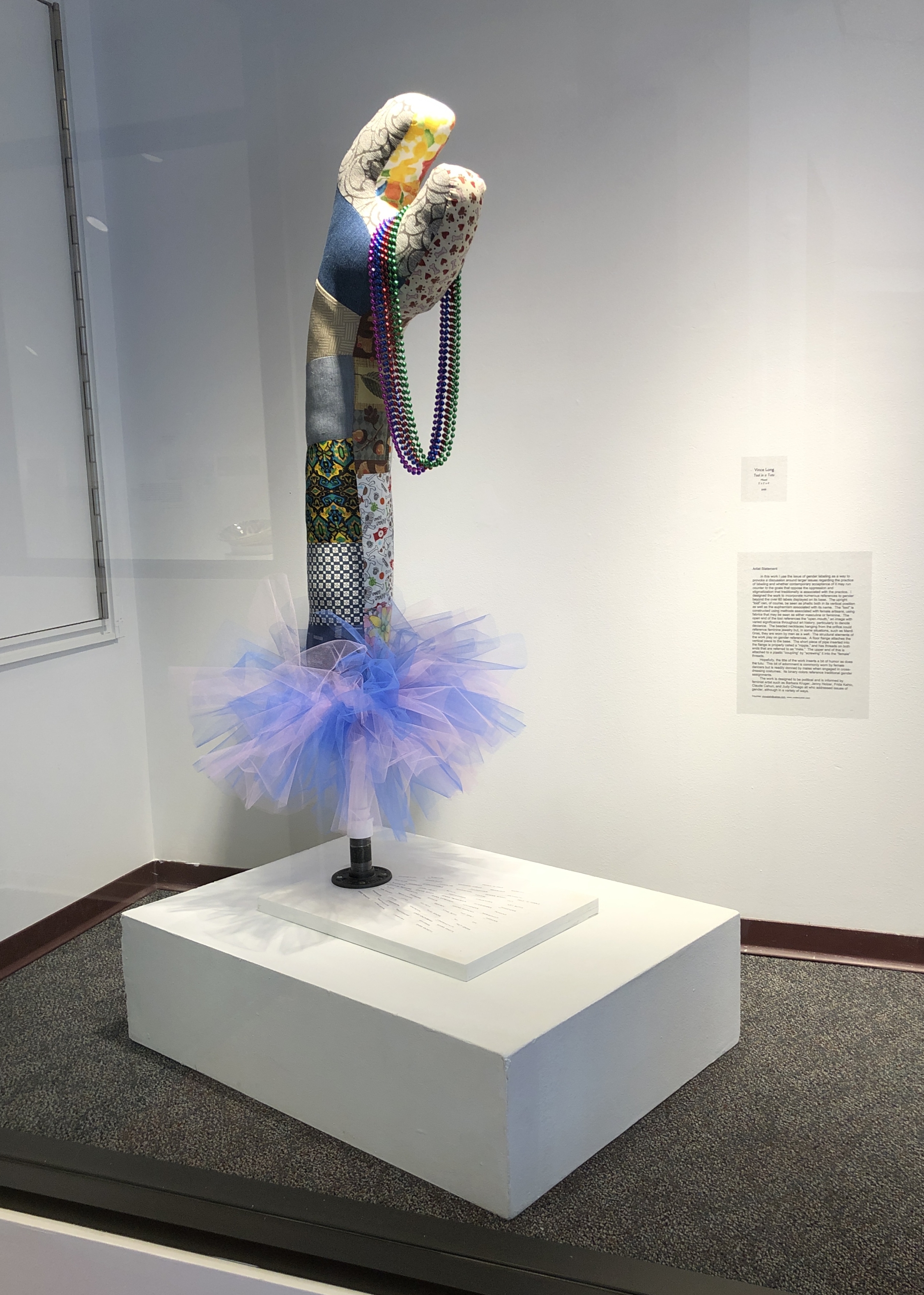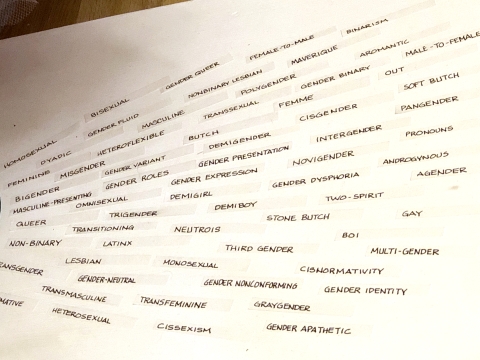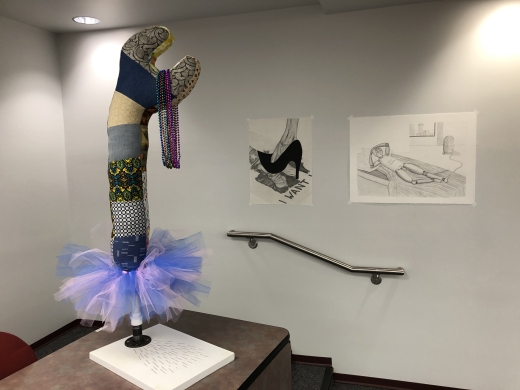Series
Sculpture
Drawing
Photography
Mosaics
BFA Exhibition
About
Other
Sculpture

Tool in a Tutu, 2021, mixed media, 2' x 2' x 4'.
This piece came about in an art history class I took in the Fall of 2021, "The History of Women in Art." For our final project we could either write a research paper or create a piece of art that dealt with the gender issue in art we had been discussing and submit it with a defense paper for class critique.
In April 2022 it was accepted into the 2022 Juried Student Art Exhibition at Montana State University - Billings and was awarded an Honorable Mention.
Artist statement:
In this work I use the issue of gender labeling as a way to provoke a discussion around larger issues regarding the practice of labeling and whether contemporary acceptance of it may run counter to the goals that oppose the oppression and stigmatization that traditionally is associated with the practice. I designed the work to incorporate numerous references to gender beyond the over 60 labels displayed on its base. The upright "tool" can, of course, be seen as phallic both in its vertical position as well as the euphemism associated with its name. The "tool" is constructed using methods associated with female artisans, using fabrics that may be seen as either masculine or feminine. The open end of the tool references the "open mouth," an image with varied significance throughout art history, particularly to denote deviance. The beaded necklaces hanging from the orifice could reference feminine jewelry but, in some situations, such as Mardi Gras, they are worn by men as a well.
The structural elements of the work play on gender references. A floor flange attaches the vertical piece to the base. The short piece of pipe inserted into the flange is properly called a "nipple," and has threads on both ends that are referred to as "male." The upper end of this is attached to a plastic "coupling" by "screwing" it into the "female" threads.
Hopefully, the title of the work inserts a bit of humor as does the tutu. This bit of adornment is commonly worn by female dancers but is readily donned by males when engaged in cross-dressing costumes. Its binary colors reference traditional gender assignments.
The work is designed to be political and is informed by feminist artist such as Barbara Kruger, Jenny Holzer, Frida Kahlo, Claude Cahun, and Judy Chicago all who addressed issues of gender, although in a variety of ways.
Base Detail

The Making
I sewed this out of scrap material I had leftover from other projects. I had made a paper pattern and sewed material together wide and long enough to cover the pattern so I could cut it out. I stuffed it with polyester fiber fill. The tutu was made from tulle fabric, knotted and bunched up on a piece of elastic, and pinned to the main body. The base and support pieces were standard hardware items. The labels we hand lettered.

|

|

|

|

|
|
Click on an image to enlarge it.
Previous Page
 Home Page
Home Page